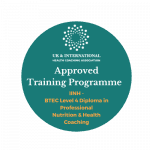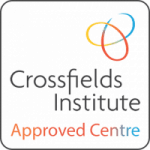What is seed cycling? If you haven’t already heard, it’s the new trending method primarily for females to add to your diet. Claiming to help get your hormone balance in check, sure this idea might seem a little woo-woo. But in all honesty, it’s pretty straight forward. So should you give it a try? This blog post will give you some more info or if you are interested in learning more about nutrition in general check out our Nutrition and Health Coaching Course.
What is seed cycling?
At its most basic, seed cycling is a routine whereby you rotate a variety of seeds in and out of your diet in line with your monthly cycle. The types of seeds you choose help to regulate oestrogen and/or progesterone depending on each of the phases of your cycle. It’s worth quickly running through the stages. There is a lot more going on in each stage but for the purpose of this blog post, we’re keeping it concise.
Day 1-14: This is the follicular phase during which oestrogen is increasing. Day 1 begins on the first day of menstruation.
Ovulation, the second phase, typically occurs day 14 when an egg is released.
Day 15-28: the final stage is called the luteal phase. At this time, oestrogen starts to lower and progesterone increase to help thicken the uterine lining to prepare for pregnancy. If the egg is not fertilized, you will get your period and menstruation begins.
What can go wrong?
I am sure a lot of you reading this are thinking the same thing: my cycle doesn’t look like that. It’s true, not every female follows this clear cut outline of 28 days. Some have longer and some shorter cycles which can be completely normal. However, it can also be the result of your hormones being out of kilter. There’s a lot of factors that can cause this imbalance but one major culprit is stress.
Your sex hormones follow a descending tree of steps, starting at cholesterol (yes a large portion of hormones are made from cholesterol). Chronic stress is one sure fire way to bypass making progesterone because it pushed the tree toward making more cortisol instead. Remember, when you’re stressed, your body needs to focus on keeping you alive, not fertile. A lot of things can contribute to creating stress: chronic worry, over-exercise, under-eating, having too low body fat, diabetes, thyroid imbalance, poor diet, HRT/birth control, phytoestrogens, being overweight etc. It’s important to note too that not all of these will cause the same outcome in every individual. Remember, we’re all unique.
What happens when things go wrong? – Women
Women naturally go through periods of hormone imbalance over their lifetime from puberty to pregnancy to menopause. Aside from these natural processes, there’s the other extreme medical scenarios: PCOS, early menopause, ovarian cancer and so on. Somewhere in the middle, we may simply go through periods when things are just not quite right. The symptoms below might happen all the time or occasionally:
- Heavy/irregular periods
- vaginal dryness
- breast tenderness
- acne
- weight gain
- infertility
- hot flashes
- reduced sex drive
What happens when things go wrong? – Men
Let’s not forget men also go through hormone changes including puberty and ageing. The medical extreme can include prostate cancer and/or hypogonadism. However, in between these two extremes, men might also experience:
- reduced sex drive
- erectile dysfunction
- low sperm count
- breast tenderness/overdevelopment
- reduced/lack of body hair
- low muscle mass
The symptoms are not there to worry you that something is dangerously wrong and please consult with your doctor. However, these are also things that potentially can be significantly improved with proper lifestyle changes. So it’s also no harm to address your diet and lifestyle. You might be surprised how much of an impact that can have.
So how does seed cycling work?
Seed cycling is said to help balance your sex hormones and it’s all to do with lignans. Lignans are a type of plant compound known as polyphenols. Polyphenols are micronutrients that we get through certain plant-based foods that are packed with antioxidants and potential health benefits. These same compounds, a group of phytochemicals, are also phytoestrogens which means they may have both a slight oestrogenic and an anti-oestrogenic effect. So by following the cycle with specific seeds, you may help support and rebalance your natural pattern.
How to start seed cycling?
The steps are incredibly simple:
Eat 1 tbsp each of pumpkin and flaxseed daily from day 1 through 14 of your cycle. The seeds help to support the natural process while also providing fibre to ensure any excess oestrogen is removed. Flaxseeds are particularly rich in lignans, shown to improve oestrogen and progesterone ratios.
Eat 1 tbsp each of sesame and sunflower seeds from day 15 through to 28. Sesame seeds and sunflower seeds contain lignans and essential fatty acids. Sunflower seeds have considerable levels of antioxidant compounds which helps to reduce oxidative stress.
Does it work?
To date, the ‘proof’ of concept seems to lie in the observational data meaning there isn’t any real scientific evidence to back the concept as a whole. Individually, however, seeds have been studied the context of hormonal balance; flaxseed, sesame as an example. However, regardless whether they help or not, seeds are proven to be extremely beneficial for overall health for a multitude of reasons so it really can’t hurt to try this. For one, polyphenols are antioxidants to support overall health. So whether it works or not, worth a try? You have to admit, it’s a great way to rotate seeds and try new foods. Just please don’t take it as a ‘cure’ or ‘solution’ and ignore other options.
Here are just a few suggestions of recipes to try:
- Chia seed pudding w/sprinkle of hemp seeds
- Apple and mixed seed butter
- Sprinkle seeds over oatmeal
- Pumpkin/sunflower seed pesto
- Tahini
- Sprinkle over salads
- Add to your favourite yoghurt and fruit combo for a bit of crunch
Seeds to try:
When it comes to buying seeds, quality matters. The seeds should be raw and freshly ground. Containing large amounts of fat means that seeds, like nuts (and oils), are sensitive to light, heat and air. Avoid buying pre-ground flax seeds, as this allows the oils to become oxidized, and they do not have the same benefits. One suggestion is buying and storing the raw, unsalted, and whole seeds, in glass jars in your fridge to keep them fresh and use as needed.
Here are a few other ideas to add some seeds to your diet:
- Pumpkin seeds
- Sunflower seeds
- Flaxseeds
- Hemp Seeds
- Chia Seeds
Other nutrients for hormone balance: zinc, magnesium, vitamin E, B6, vitamin C, sulphur, fibre, cholesterol.
Don’t forget about Omega 3!
We’ve talked a lot about seeds but a final comment on the omega 3:6 ratio. Much like nuts, seeds are very easy to overeat and they are also high in omega 6. And while these are a whole food, eating too much omega 6 and not enough omega 3 is not a good idea. Different foods contain either omega 3 or 6. The recommended intake is a daily ratio of 2:1 (omega 6:3), the average individual gets up to 20:1 (20 x more omega 6). Omega 6 is pro-inflammatory while omega 3 is anti-inflammatory. Daily we need both but too much of the inflammatory doesn’t help your body. You can watch this video on omega 3 from plants and from animal foods.
Beyond Seed Cycling: Lifestyle Changes
And finally, balancing hormone is not as easy as just clicking your fingers or taking a magic supplement. It requires work and effort to make healthy choices as a lifestyle. If you think you’re a bit off kilter, don’t forget we have a student clinic that offers private consultations. Alternatively, here are some final suggestions to take away:
- maintaining a healthy body weight
- Regular exercise
- Removing all packaged/processed food from your diet
- reducing and managing stress daily
- Reducing chemical exposure overall – i.e. beauty products, cleaning products, washing products combined. Look for natural replacements where possible
- Practising meditation/yoga
- Limiting sugar and refined carbohydrates
- Eating plenty of omega 3 and 6 rich foods.











